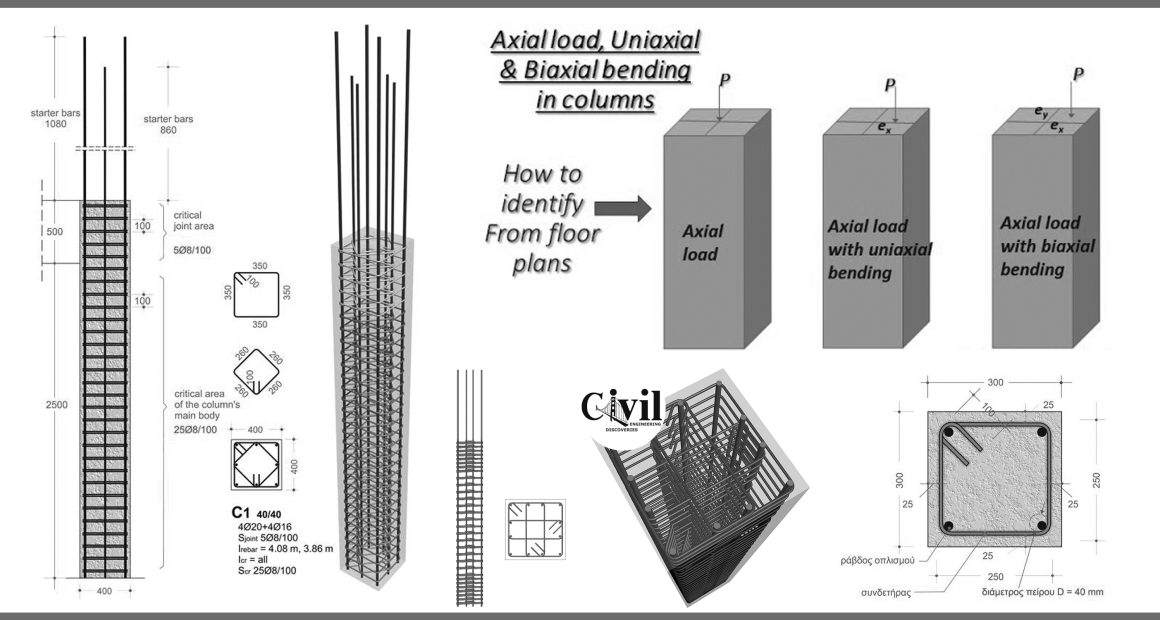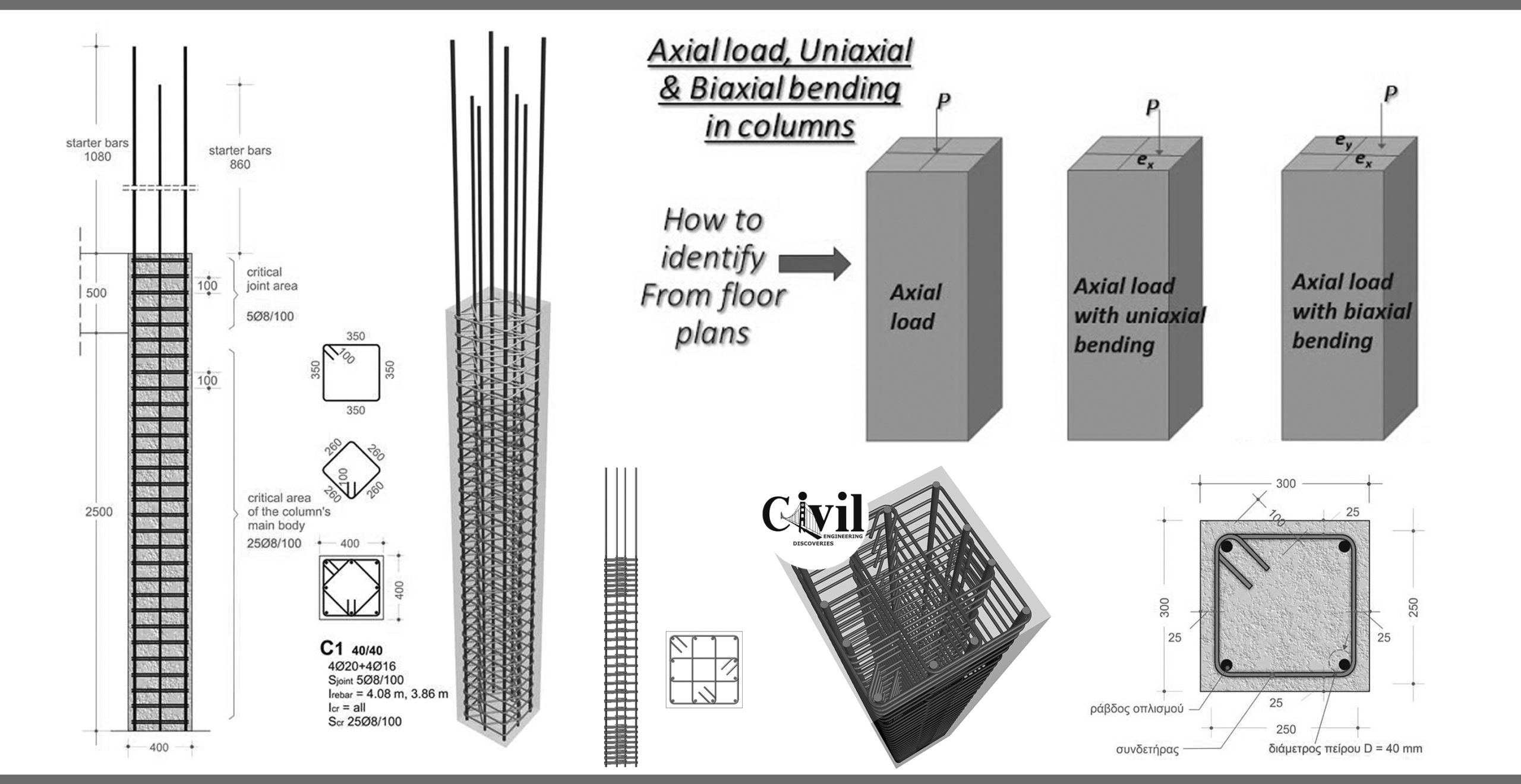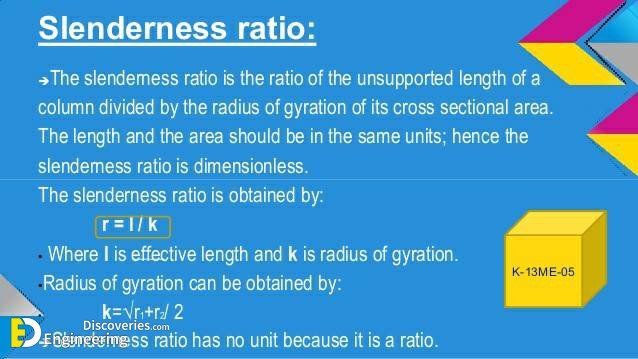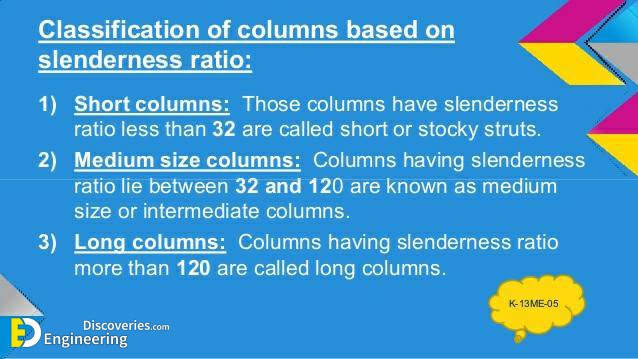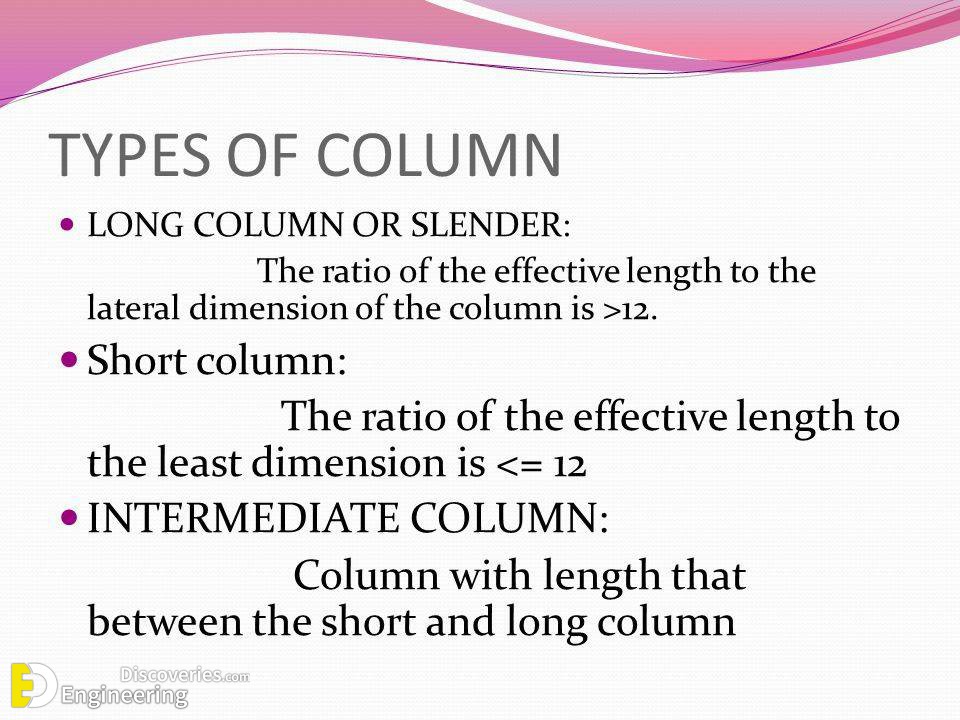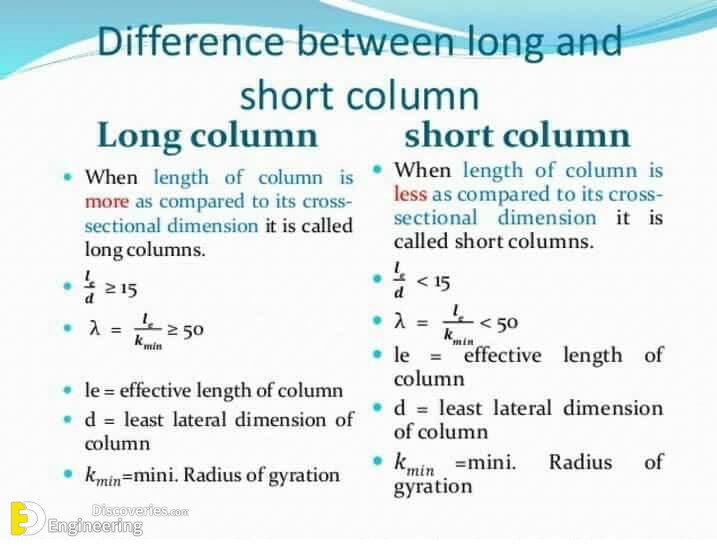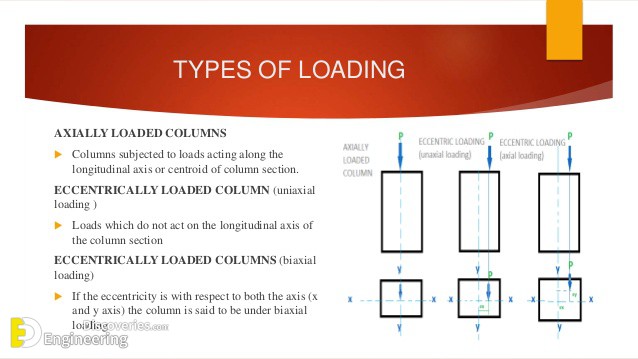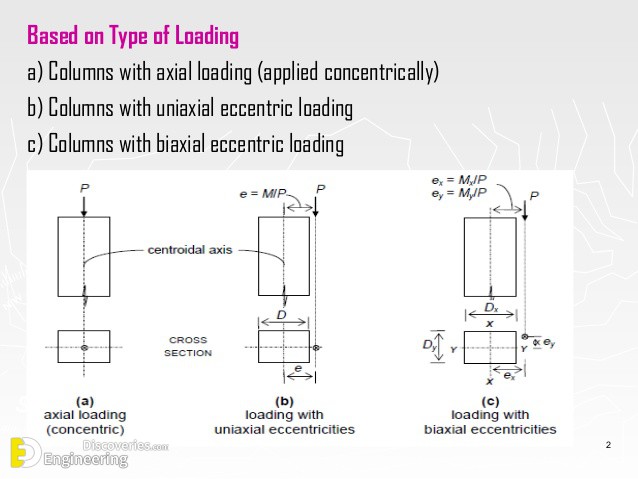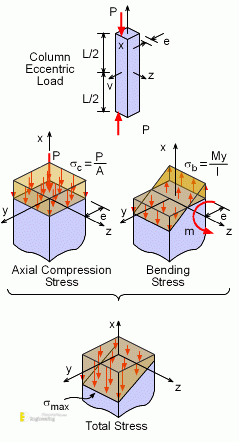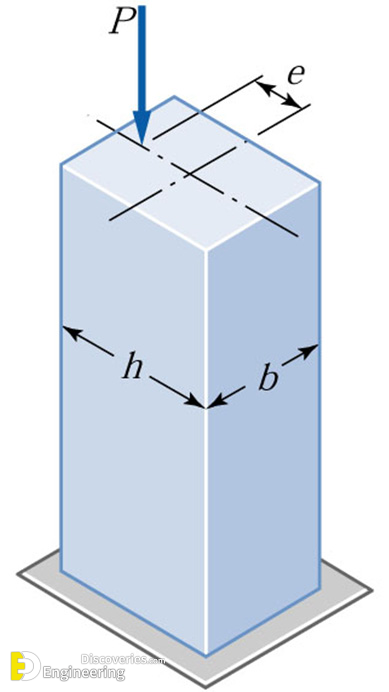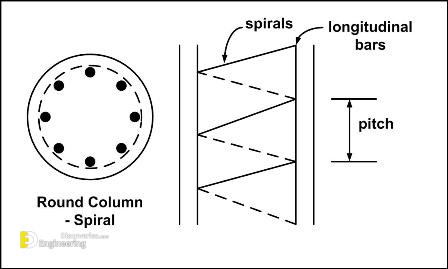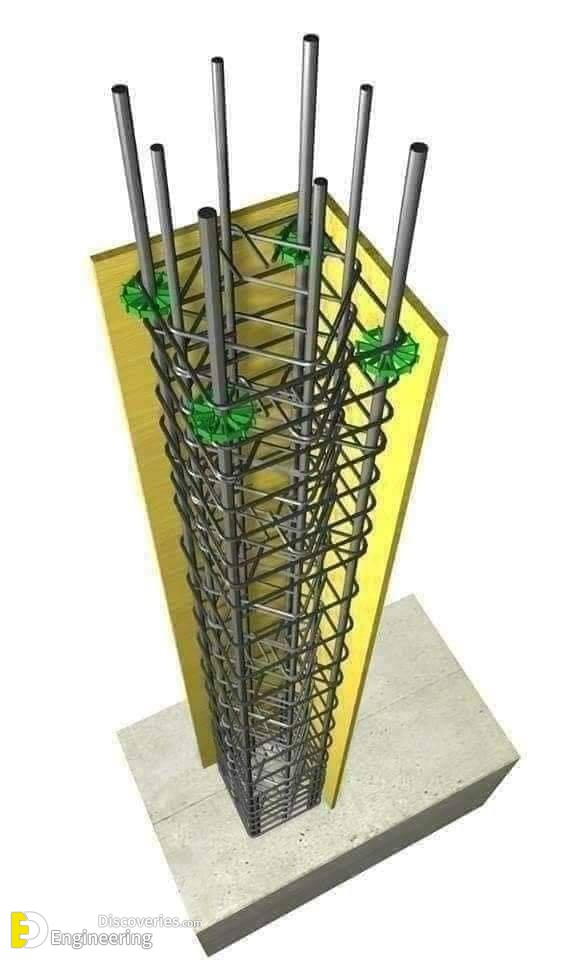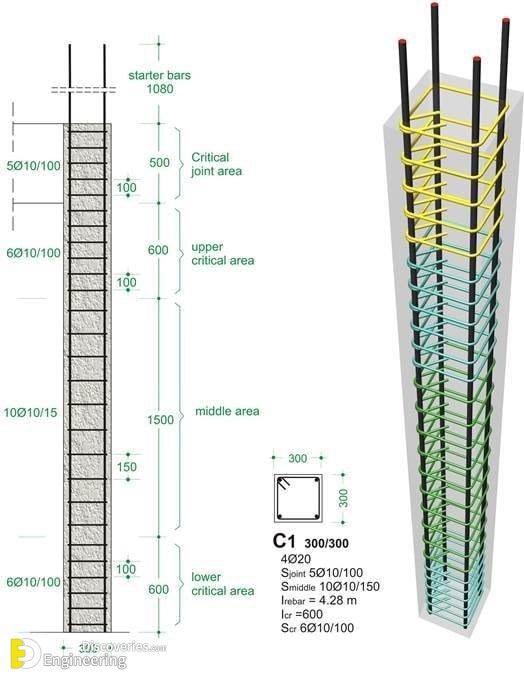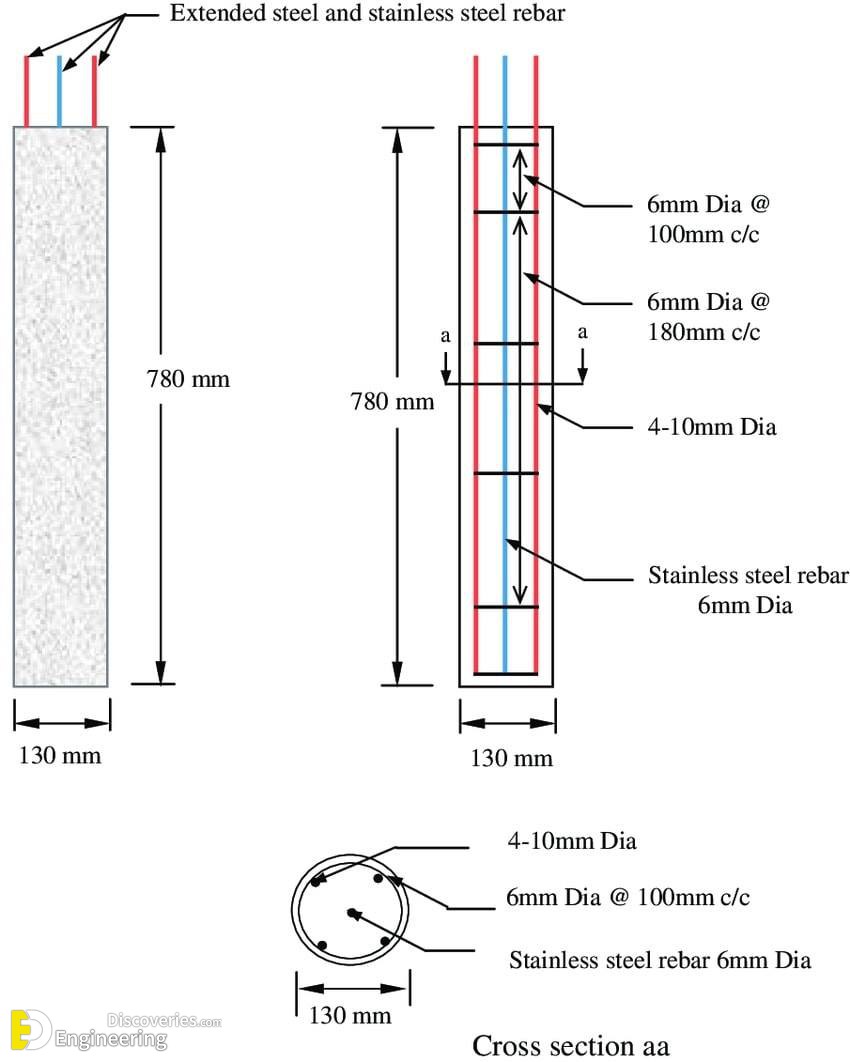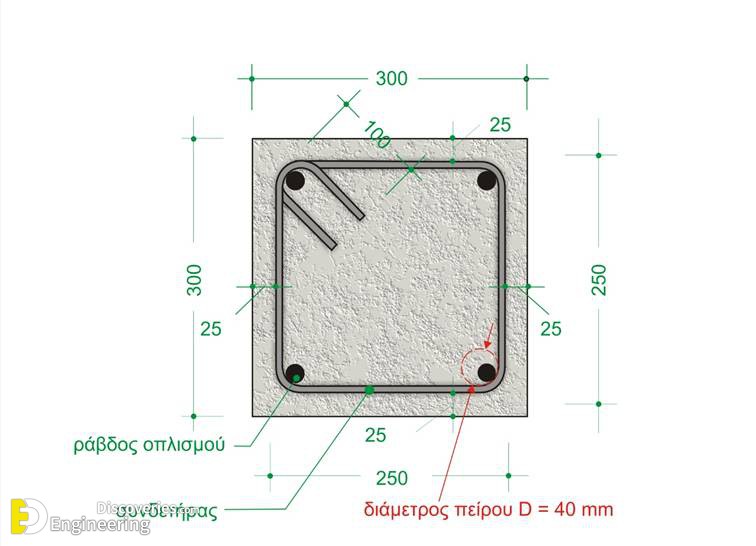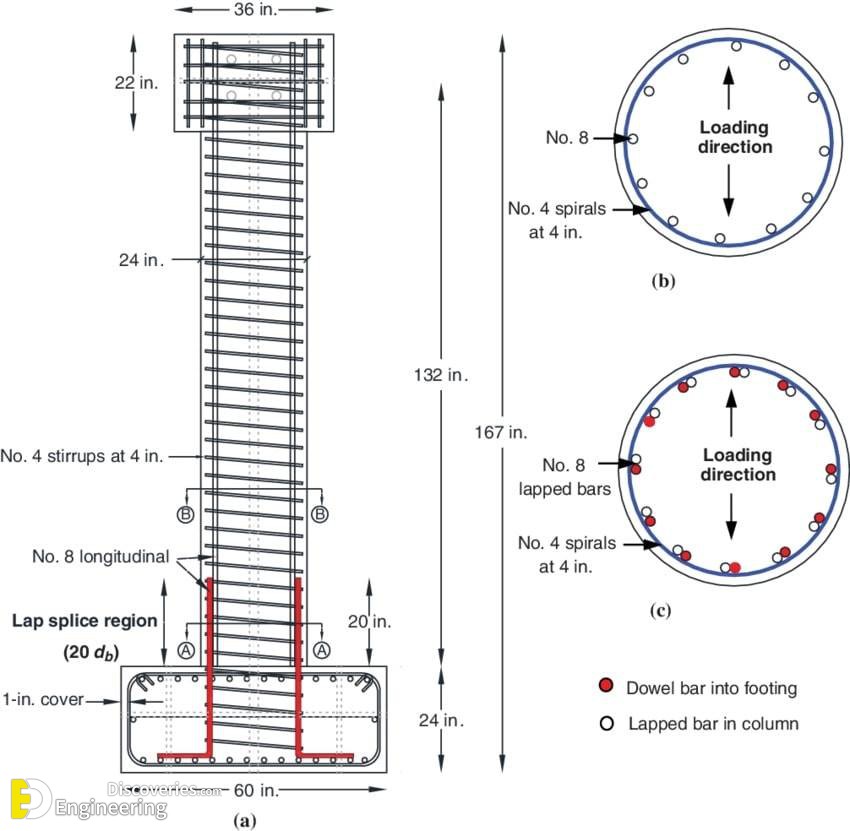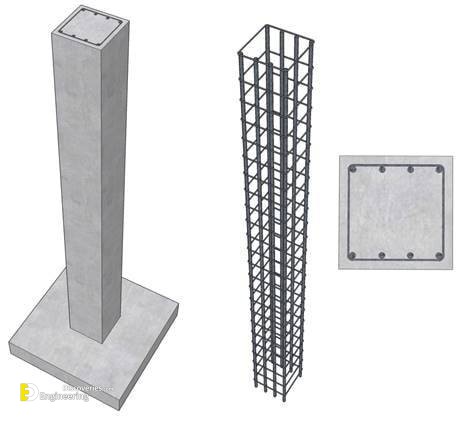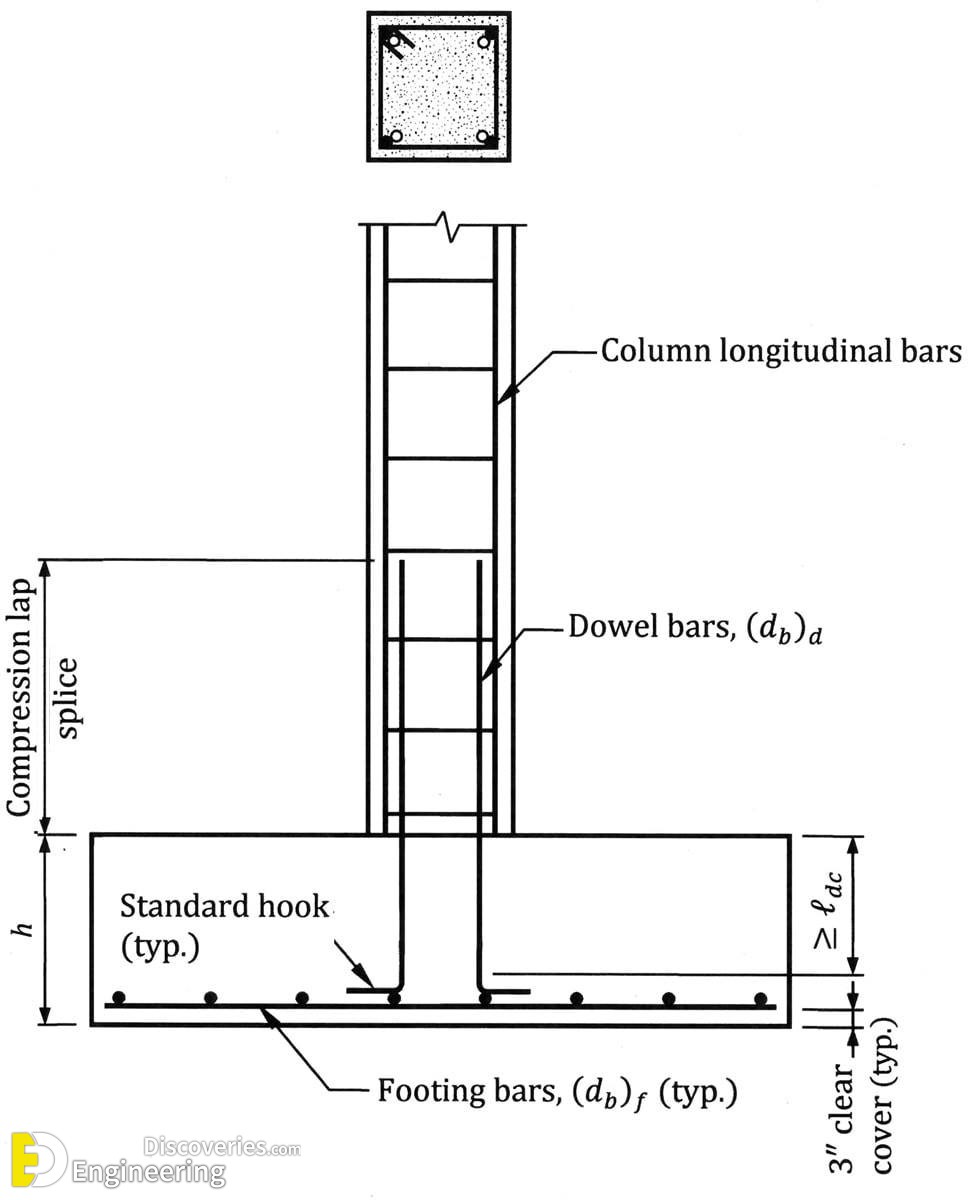Reinforced Concrete Columns
A column is a very important component in a structure. It is like the legs on which a structure stands. It is designed to resist axial and lateral forces and transfer them safely to the footings in the ground. You can manually calculate the superimposed loads on a column in a structure using a simple process outlined in this linked article. columns support floors in a structure. Slabs and beams transfer the stresses to the columns. So, it is important to design strong columns.
The axial load carrying capacity of a column is deduced from the formula
I would recommend using advanced structural design software like ETabs or Staad Pro for the design of structures. Column design does not depend only on axial loads, but also on many other factors. There are bending moments and torsional forces induced due to beam spans, wind loads, seismic loads, point loads and many other factors.
In this article, we are going to discuss in detail the basis of classification of columns and different types of reinforcement required for a certain type of column.
A column may be classified based on different criteria such as:
1- Based on the shape
- Square
- Rectangular
- Circular
- Pentagonal
- T-Shape
- L-Shape
- Polygon
Materials of Column
- Timber
- Masonry
- R.C.C
- Steel Column
- Composite Column
3- Based on the slenderness ratio
The ratio of the effective length of a column to the least radius of gyration of its cross-section is called the slenderness ratio.
- Short RCC column, =< 10
- Long RCC column, > 10
- Short Steel column, =<50
- Intermediate Steel column >50 and <200
- Long Steel column >200
4- Based on the type of loading
- Axially loaded column
- A column subjected to axial load and uniaxial bending
- A column subjected to axial load and biaxial bending
5- Based on the pattern of lateral reinforcement
- Tied RCC columns
- Spiral RCC columns
Minimum eccentricity
Emin > l/500 + D/30 >20
Where, l = unsupported length of the column in ‘mm’
D = lateral dimensions of column
Types of Reinforcements for columns and their requirements
Longitudinal Reinforcement
- The minimum area of cross-section of longitudinal bars must be at least 0.8% of the gross-section area of the column.
- The maximum area of cross-section of longitudinal bars must not exceed 6% of the gross-cross-section area of the column.
- The bars should not be less than 12mm in diameter.
- The minimum number of longitudinal bars must be four in the rectangular column and 6 in a circular column.
- The spacing of longitudinal bars measures along the periphery of a column should not exceed 300mm.
Transverse reinforcement
- It may be in the form of lateral ties or spirals.
- The diameter of the lateral ties should not be less than 1/4th of the diameter of the largest longitudinal bar and in no case less than 6mm.
The pitch of lateral ties should not exceed
- Least lateral dimension
- 16 x diameter of longitudinal bars (small)
- 300mm
Helical Reinforcement
The diameter of helical bars should not be less than 1/4th the diameter of the largest longitudinal and not less than 6mm.
The pitch should not exceed (if helical reinforcement is allowed)
- 75mm
- 1/6th of the core diameter of the column
Pitch should not be less than
- 25mm
- 3 x diameter of the helical bar
Pitch should not exceed (if helical reinforcement is not allowed)
Least lateral dimension
- 16 x diameter of the longitudinal bar (smaller)
- 300mm
Click Here To See Column Design With Excel Sheet
